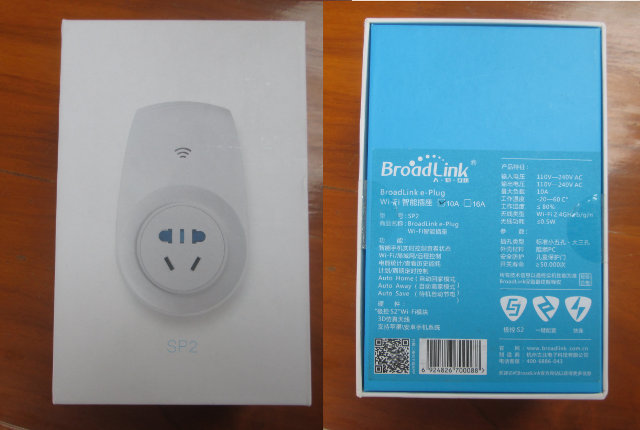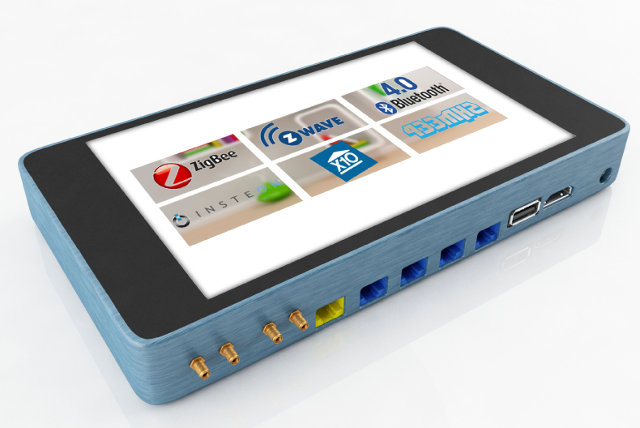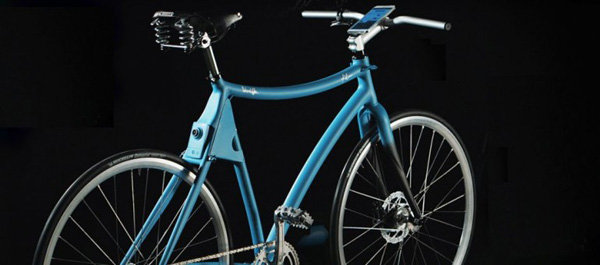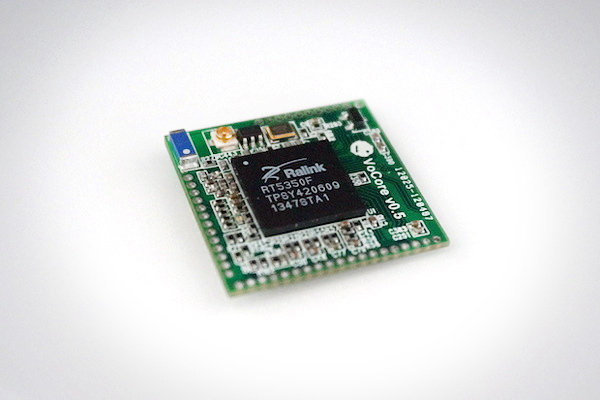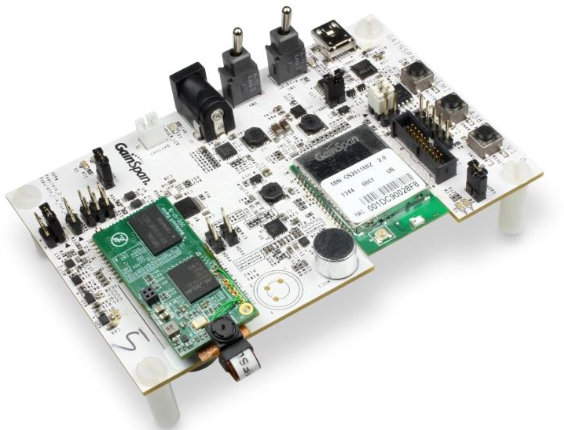Up until now, the only company I ever heard running Linux on ARM Cortex M3/M4 was EmCraft Systems with their system-on-modules and development kits based on Freescale Kinetis, STMicro STM32 and Actel Smartfusion micro-controllers. But there’s now another option thanks to Ampek Technologies, a Canadian based company funded in 2002, and their iCon (Internet Connectivity) board featuring NXP LPC1788 Cortex M3 connected to 64MB RAM which is plenty enough to run uCLinux. The board can be used for applications such as industrial control systems, wireless sensors, or smart home appliances. The iCon board specifications are as follows: MCU – NXP LPC1788 ARM Cortex-M3 MCU @ 120MHz with 512 KB flash memory, and 96 KB SRAM System Memory – 64MB SDRAM (external chip) Storage – 32MB flash for firmware Connectivity – 802.11 b/g/n, Bluetooth 4.0. Ethernet is supported via an add-on module USB – USB 2.0 host port, mini-USB debug port […]
Review of Broadlink SP2 Wi-Fi Smart Plug
I have received Broadlink SP2 Wi-Fi smart socket for Android and iOS thanks to GearBest, a Chinese e-retailer, that was kind enough to send a sample for review. I’ll start by showing some pictures of the package and device, and report the results of my review with an Android phone (ThL W200). Broadlink SP2 Unboxing Pictures The company send me the parcel via DHL, and I received in the package below, the top with the picture, and the bottom with specifications in Chinese. There’s only the smart plug in the package. The top is a universal plug, but the bottom is a Australian/ Chinese plug, so most people would need a wall adapter. It support 110 to 240V AC up to 10 amperes, consumes less than 0.5W without load, and it designed to handle 50,000 on/off events. The thing that surprised me was the size of the plug at first, […]
Soap is a Touchscreen Enabled Router Supporting Gigabit Ethernet and Lots of Wireless Standards (Crowdfunding)
Soap is a strange creature, and I’m not convinced there are that many use cases for such hardware, but I find it interesting that the developers decided to pack a Freescale i.MX6 Solo/Dual or Quad SoC powered Android 4.4 tablet and a router supporting five Gigabit Etherner ports, as well as WiFI 802.11ac, Wi-0Fi 802.11 b/g/n, Zigbee, Z-wave, Bluetooth 4.0 (BLE), Insteon RF, X10, 433Mhz, NFC, and infrared into one and only device which they call an “Intelligent Home Management Hub”. It’s also complete with an HDMI output port so that you can use it as a media player. Let’s go through the specifications for the four version this little monster (Soap Solo, Soap Dual, Soap Quad, and Soap 8.4): SoC Soap Solo – Freescale i.MX6 Solo single ARM Cortex A9 @ 1 GHz with Vivante GC880 3D GPU Soap Dual – Freescale i.MX6 Dual dual ARM Cortex A9 @ […]
Meet Samsung Smart Bike fitted with an Arduino, a Rear Camera, Lasers and More
Samsung Maestros Academy has introduced a Smart Bike prototype integrating various “smart” components within its aluminum frame, such as an Arduino board connected to a Wi-Fi + Bluetooth module, a battery, four laser projectors, and a digital camera controlled by a Samsung smartphone. The camera is fitted at the back just under the seat, and allows the riders to have a real-time rear view image on the phone. The four lasers are used to create a virtual bike lane in case a real one is missing, and remind other drivers to keep a safe distance to your bicycle. The bike can also detect ambient conditions using the smartphone sensors, and modify its behavior. For example, it can switch on or off the laser beams depending on the brightness sensor data from the smartphone. Each bike also tracks daily routes of the riders using GPS, and can let local authorities know where bicycle traffic is most intense, and […]
WifiDuino Arduino Compatible Wi-Fi Board Features an Optional OLED Display (Crowdfunding)
Getting Wi-Fi with Arduino can be relatively expensive, and may take a little too much space. Spark Core board greatly addressed both price ($39) and form factor issue last, but there’s another option coming to market thanks to WifiDuino a $34 board with Wi-Fi, that’s tiny and Arduino compatible. An OLED display is also available as an option, at a lower price point than MicroView board, and including Wi-Fi or not, depending on the perk. WifiDuino hardware specifications: MCU – Atmel Atmega32U4 (same as Arduino Leonardo) Display – Optional 128×64 OLED display Connectivity – Optional Wi-Fi 802.11 b/g with STA, AP and ADHOC network modes Digital I/Os – 20 Analog I/Os – 12 Other I/Os – 7x PWM, UART, I2C, SPI Power – 5V Dimensions – Duino board only without Wi-Fi nor OLED: 25.6mm x 38.8mm x 11.0mm WifiDuino support the Arduino IDE, so you can write you sketch as […]
AsiaRF AWM002 Wi-Fi Module and a Tiny IoT Server Kit Get Crowdfunded for $15 and Up
VoCore Wi-Fi module selling for $15 to $20, and it’s corresponding VoCore Dock with Ethernet has been quite popular, and at the time of writing, the project has already received $40,000 in funding with 50 more days to go. But if you’d rather get something for the same price, a few months early, and an already FCC/CE certified and proven module and tiny IoT server, AsiaRF has also launched a crowdfunding campaign for their AWM002 Wi-Fi module running OpenWRT on the same Ralink RT5350 found on the VoCore. as well as AWM002 Tiny Kit which adds Ethernet and USB, and a larger board with easier access to all ports and I/Os. As a reminder, let’s go through AWM002 specifications again: SoC – Mediatek/Ralink RT5350 MIPS 74KEc core @ 360 MHz dual band 802.11n Wi-Fi with data Rate up to 150Mbps, hardware NAT, QoS, TCP/UDP/IP checksum offloading. System Memory – 32 MB Storage […]
$15 Open Source Hardware VoCore Wi-Fi Module Runs OpenWRT (Crowdfunding)
There are already low cost Wi-Fi modules that can be used for the Internet of Things such as AsiaRF AWM002 and Hi-Link HLK-RM04. However, AsiaRF mainly caters to companies, and the Hi-Link module has a limited memory (16MB), which may or may not be an issue depending on your application. VoCore Wi-Fi module could prove to be an interesting option as it is the same $15 to $20 price range, runs OpenWRT with 32 MB RAM, will be open source hardware, and provides up to 20 GPIOs in a tiny (25x25mm) form factor. VoCore Wi-Fi module specifications: SoC – Ralink/Mediatek RT5350 MIPS processor @ 360MHz with dual band 802.11n Wi-Fi with data Rate up to 150Mbps System Memory – 32 MB RAM Storage – 8MB SPI Flash (for firmware) / 16 MB on limited edition Available Signals (Via through holes): 10/100M Ethernet USB UART, I2C, SPI I2S, PCM JTAG Over 20 […]
GainSpan Introduces Full HD Video Application Development Kit for Wi-Fi IP Video Streaming Applications
GainSpan, a company providing low-power Wi-Fi solutions for the Internet of Things, and GEO Semiconductor, a semiconductor and software company specializing in camera and video solutions, have recently announced a Full HD resolution Video Application Development Kit (ADK) targeted at Wi-Fi video streaming applications in the surveillance, security and automotive markets such as battery or line powered IP cloud cameras, door bell cameras, baby monitors, toy cameras and automotive backup/drive recorder cameras The development kit features GainSpan GS2011MIZ low power IEEE 802.11b/g/n module, and GEO Semi MAX64380 1080p30 H.264 Camera CODEC, as well as MAXIM MAX9860 mono audio codec, and MAX98300 Class D amplifier. GainSpan Full HD Video ADK (GS-ADK-VideoGeo1080p) key features include: GS2011MIZ module with low power IEEE 802.11b/g/n compliant module with PHY rates up to 72 Mpbs. Supports Limited AP, Wi-Fi Direct with concurrent mode, WPS2.0. Wi-Fi Security – 802.11i, WPA/2, Personal and Enterprise, legacy WEP, TLS Full […]


